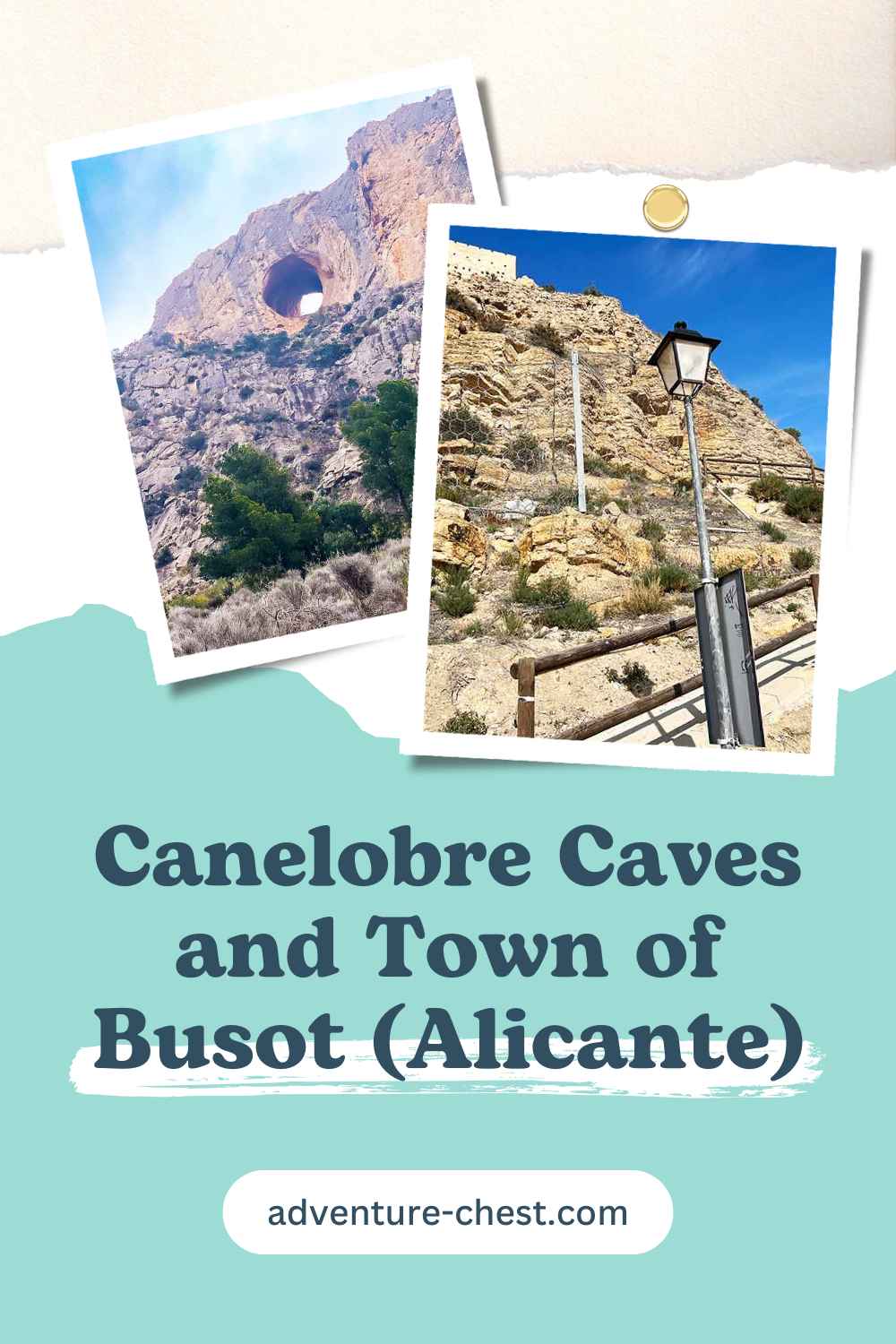The caves of Canelobre are still a hidden gem of Costa Blanca, and not many tourists make it a part of their itinerary. However, visiting them is very simple and straightforward, and you don’t even need a guided group tour from Alicante if you prefer DIY trips. Here’s everything you need about Canelobre caves or “cave” and how you can see them.

Facts
The limestone cave is relatively small the whole tour will take approximately 45 min and there’s not much walking to do. It features all kinds of underground natural formations — stalactites, stalagmites, and columns. The temperature inside is below 20°C / 70°F all year round. It may be not the longest or deepest cave in Europe, but definitely one of the most beautiful.
| Estimated Age | 7,000,000+ years |
| Height of Main Vault | Varies between 55–70m (180–230ft) |
| Length of Cave System | ≈200m (656ft) |
| Average Temperature | 18°C (64°F) year-round |
| Location elevation | 700m / 2,300ft |
| Depth Below Surface | ≈35 m (115 ft) |
| Formations | Stalactites, stalagmites, and flowstones |
| Geological Type | Limestone |
| Discovery Date | Xth century |
| Key Chamber Volume | Approximately 80,000 cubic meters (2.8 million cubic feet) |
History
The age is estimated at 7 million years. The guide will tell you that some formations you see below fell from the top at some point in time and some more falling is expected in the next few million years to come.
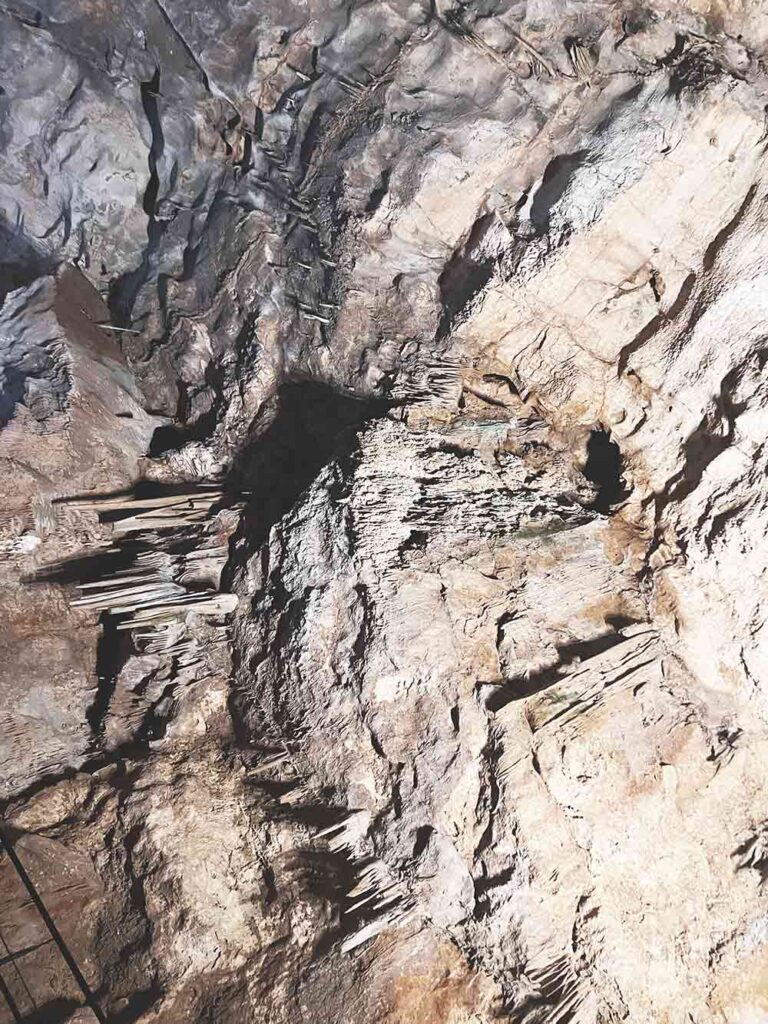
The first discovery dates back to the Moorish era of Spanish history. It is believed that the Moors may have used the caves for shelter or as a strategic hideout due to their concealed location.
While specific historical documentation from this period is scarce, local legends and oral traditions suggest that the Moors were aware of the caves’ existence and possibly exploited their natural seclusion.
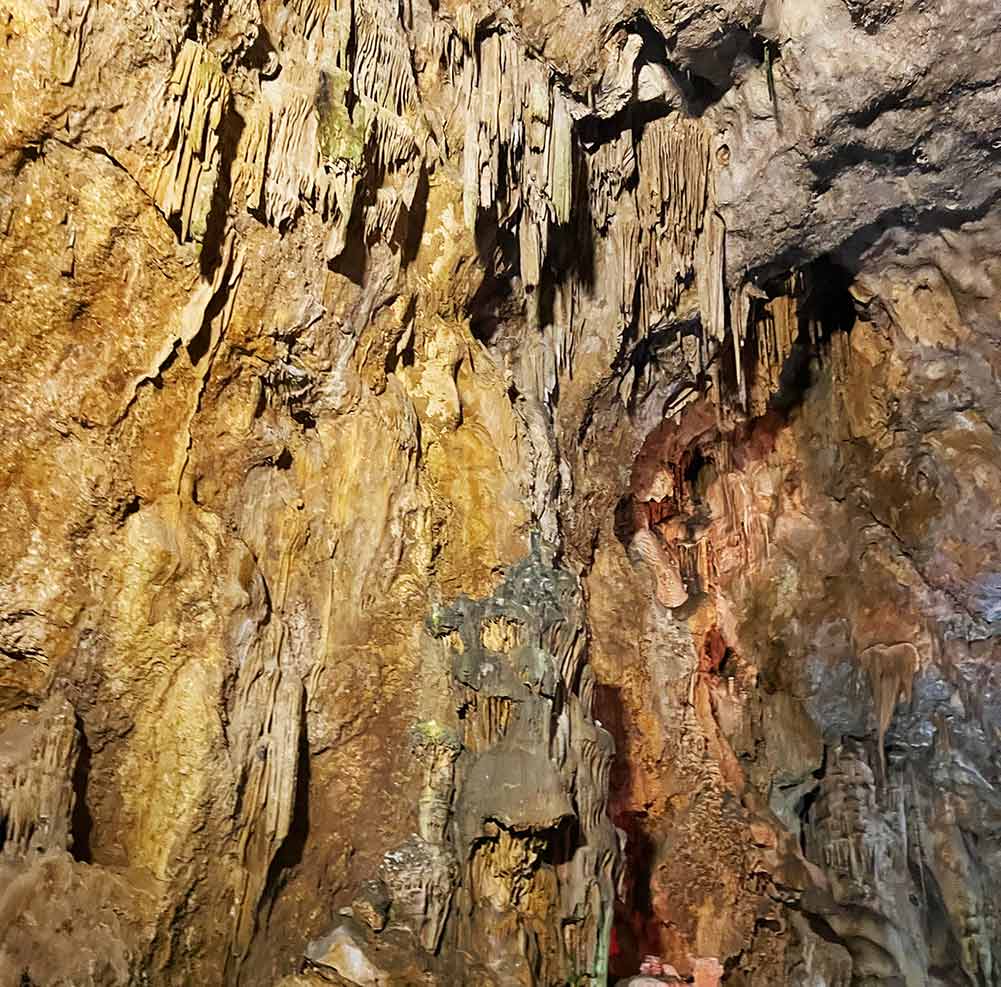
During the Spanish Civil War in the 1930s, the Republican army utilized the caves as a clandestine workshop for repairing aircraft engines.
How to visit
The mount hosting the cave is Cabeçó d’Or or Golden Head in Valencian. If you didn’t know Valencian dialect is slightly different from the classic Spanish ‘Castellano’. If the weather is good you can see the climbers right above the entrance to the cave.

Despite being related to Busot town itself, the cave is about 2,7km / 1.7mi away from the town if you measure directly and 5.5 km / 3.4 mi if you drive. So if you rely on public transportation, the walk is not so short, and biking there can be quite challenging due to elevation.
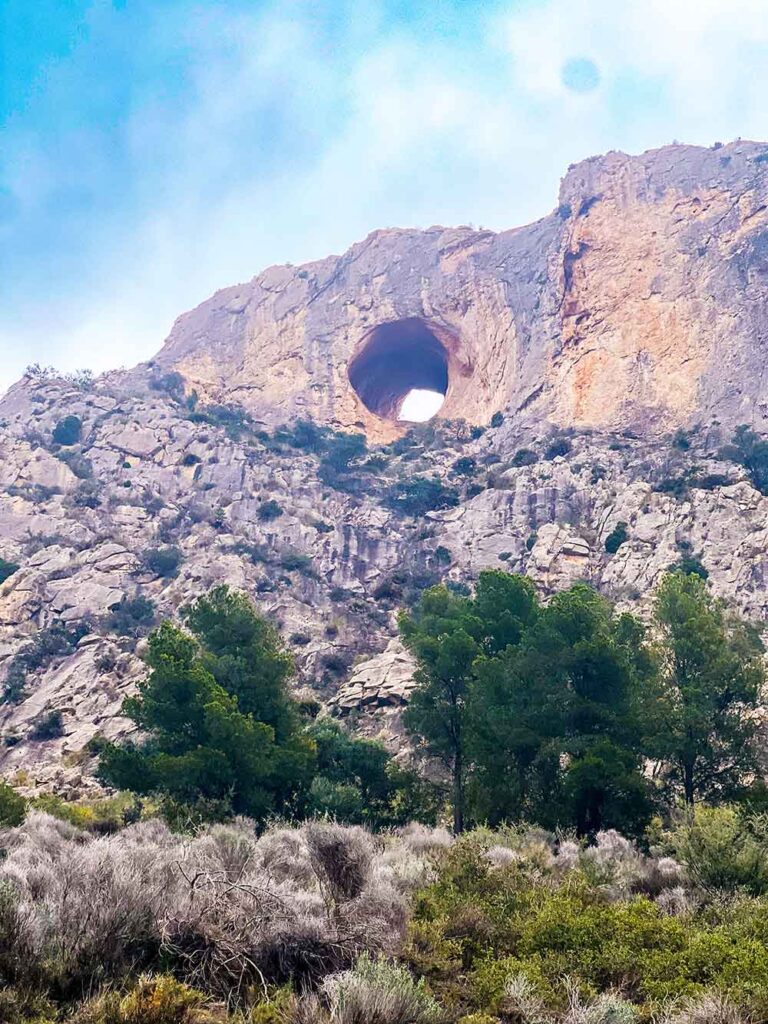
The parking is free: there is a smaller parking lot at the very top, but the majority of visitors prefer to park below the hill. On the way up you will see another interesting attraction — a circular hole right in the lime rock.
Location Details
Canelobre Caves Ticket Prices
As mentioned above, you don’t need a tour to pick you up from Alicante or Benidorm, but the cave itself is not self-guided. After you purchase the tickets, you will need to wait for the next guided session, which is run about every hour. However, no one will push you out after the excursion, you can take some minutes to contemplate and explore.
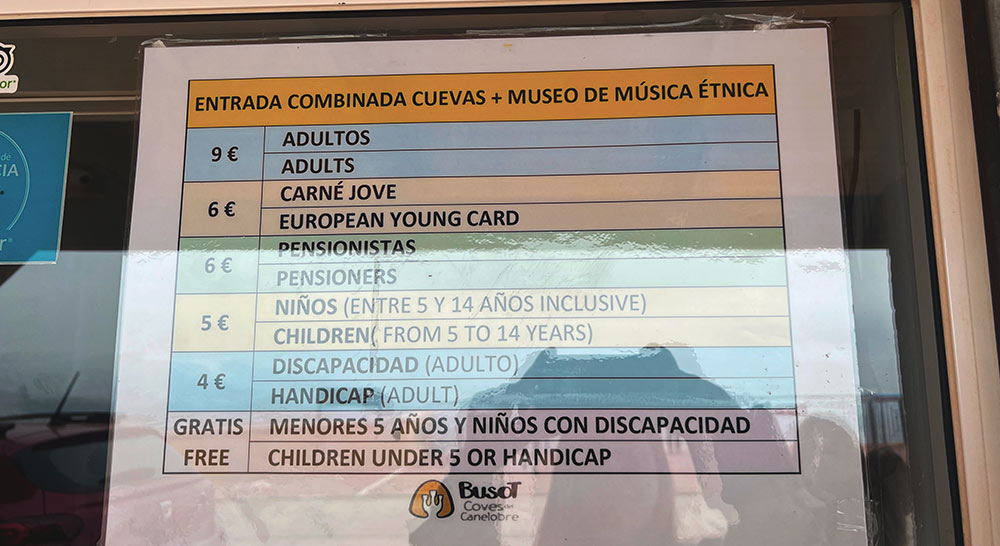
As of the 2024-2025 winter season, the prices are the following $10 / €9 / £7.45 for adults and $5.3 / €5 / £4 for a child ticket. The same ticket will grant you free access to the Busot Museum of Ethnical Music, which will be covered below.
What to expect
As you go up the hill you will start feeling the elevation, which may complicate breathing. But the stunning views of the Busot Valley compensate for the inconvenience.
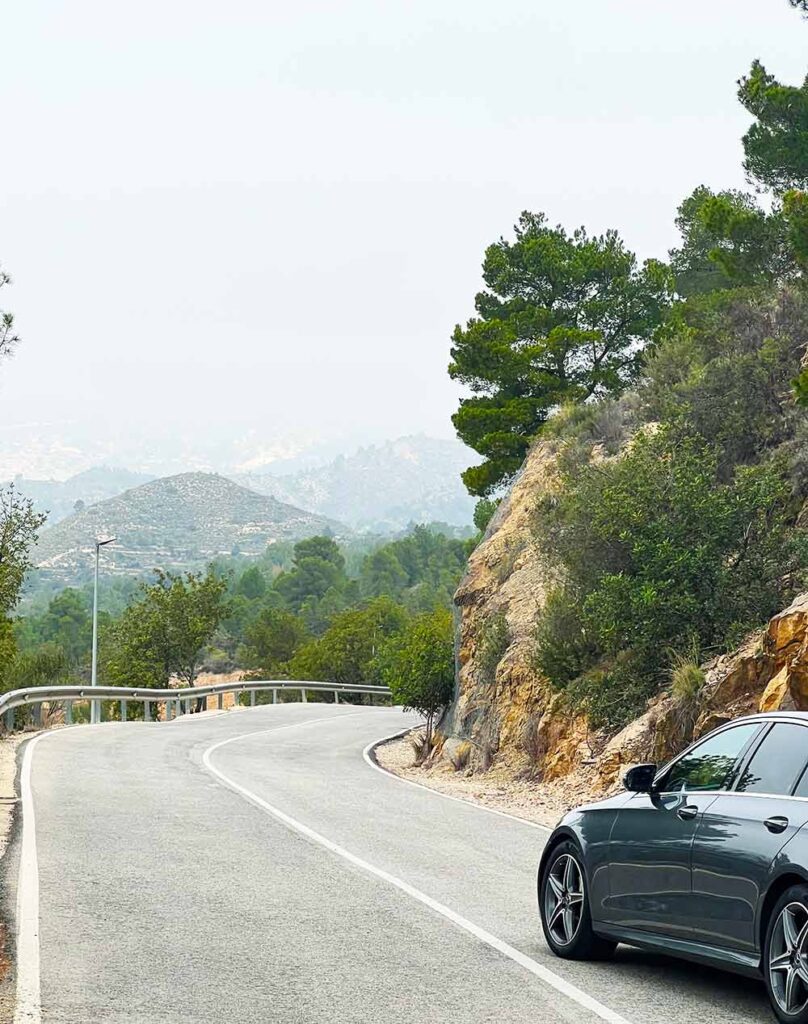
While you are waiting for a guide to let you in, you can grab a coffee from the nearby stall and enjoy the views from the panoramic observation point that is right in front of the cave entrance. One level below, there is an informational center, where you can listen to audio records to learn more about the place.
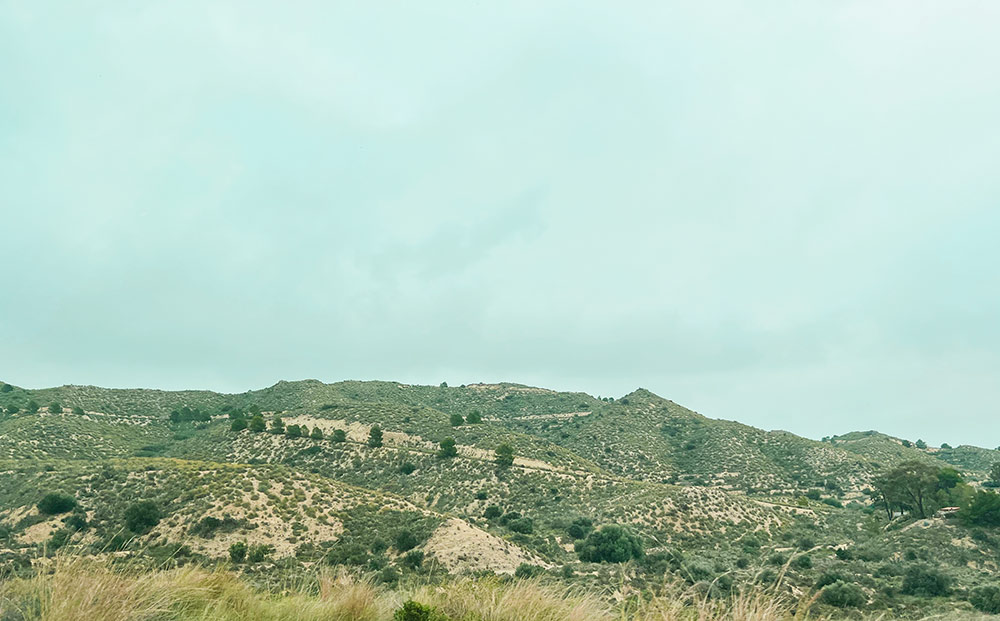
Before the tour starts you will walk along the passage and a photo will be taken. You can purchase the photo at the end, but it’s completely optional. The guided tour will start at the vault, the narrative will be in Spanish, but the guide will be translating to English as well.
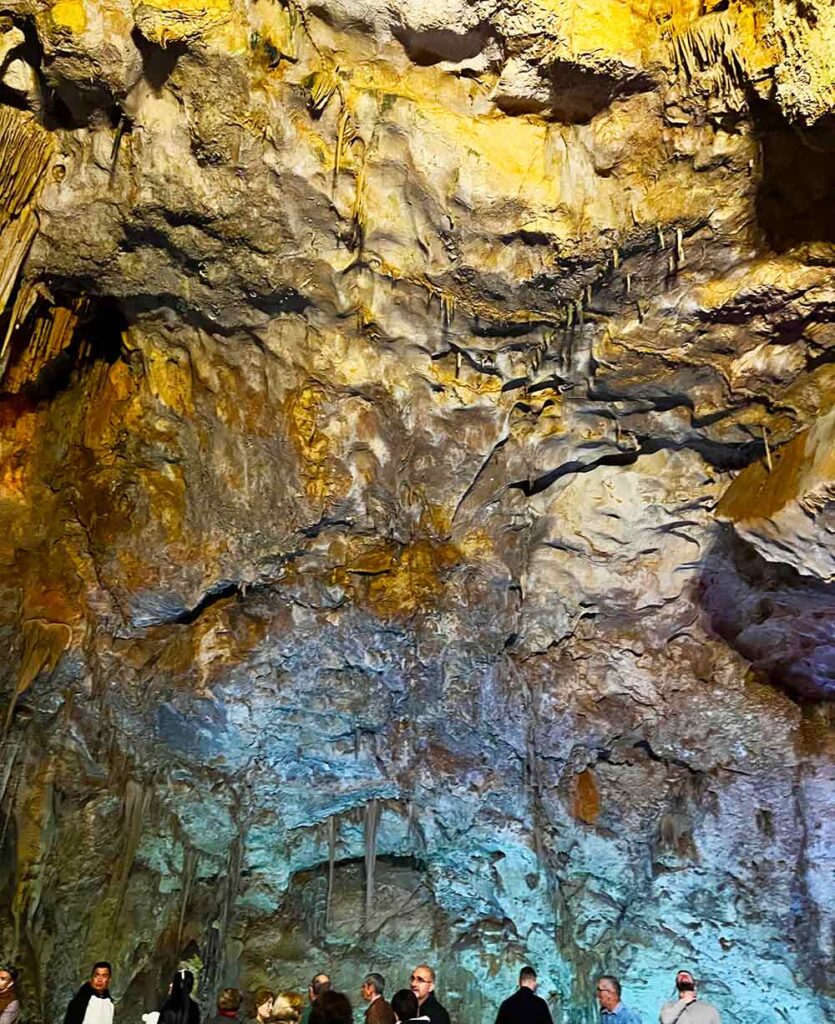
Even though, some sources online say that you can take photos without a flash. As of now, taking photos is not allowed at all, even if it’s just your phone. Every time someone pulls it out, they will be told to stop by the guide. However, if you manage to snatch some pictures, no one will ask you to delete them afterward.
Caves of Canelobre Map
The drive from Alicante to Canelobres caves is relatively short. There are a few routes you can take, varying between 30-40 minutes. It’s hard to get lost — you will be seeing multiple signs along the way.

You will have to drive through Busot anyway, but I recommend visiting the caves first and then taking your time to explore Busot on your way back.
Town of Busot
The town is very small (only ≈3,000 inhabitants) and picturesque. As it’s located right on the hills, expect some walking up and down. Though the majority of buildings are modern, you can still see the Moorish influence in the architecture here and there.

We were heading to see the ruins of the Busot castle, which ended up a bit disappointing. But in between the caves and ruins, we made a stop at the town hall square to have lunch. The prices are not too high for the area — about $16 / €15 / £13 per person and the coffee will be served with a shot of sweet liquor.
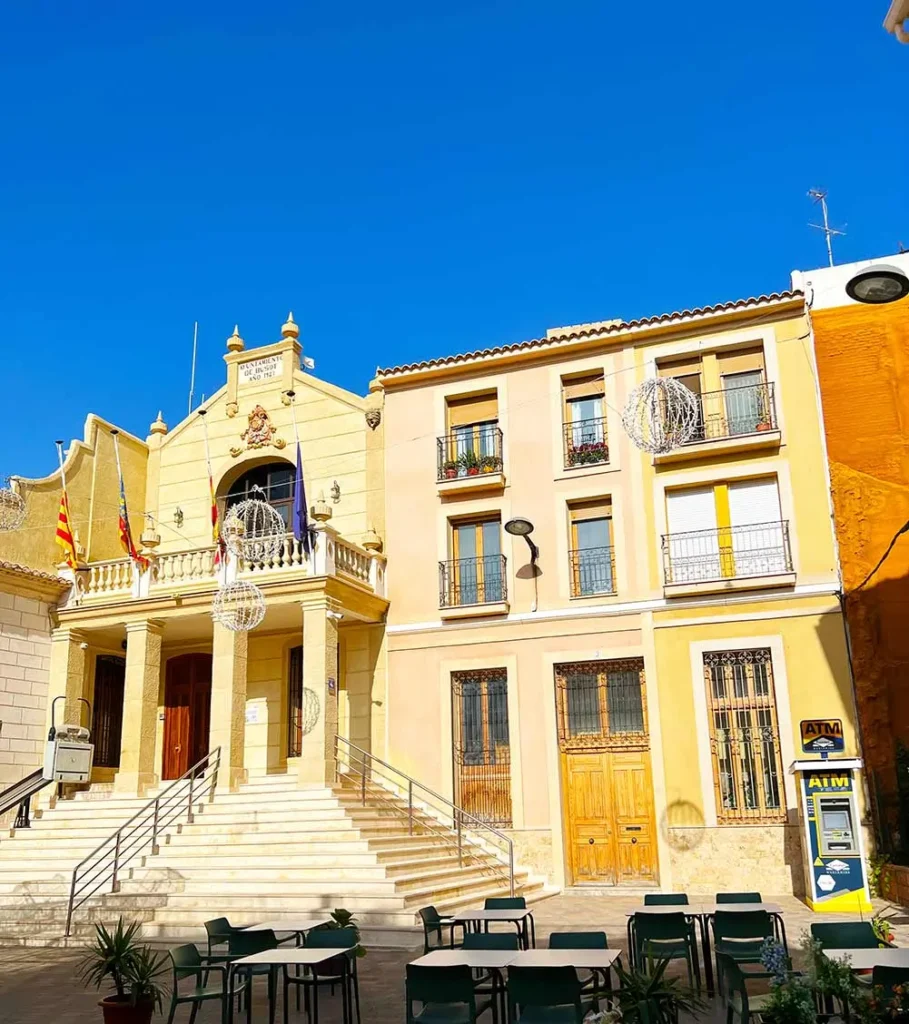
Museu de Música Ètnica de Busot
The museum is located a few steps to the right from the Busot town hall. At first, we were a bit skeptical about going there, but we were not disappointed at all. It’s small but very well-organized, interesting, and exotic.
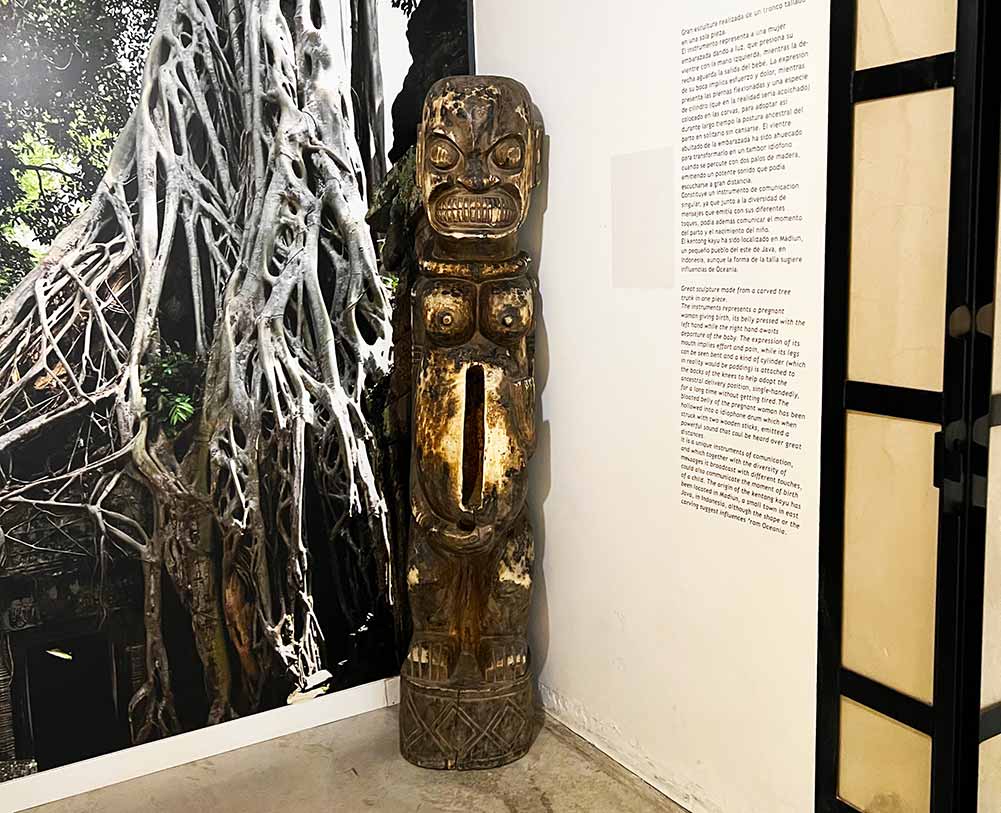
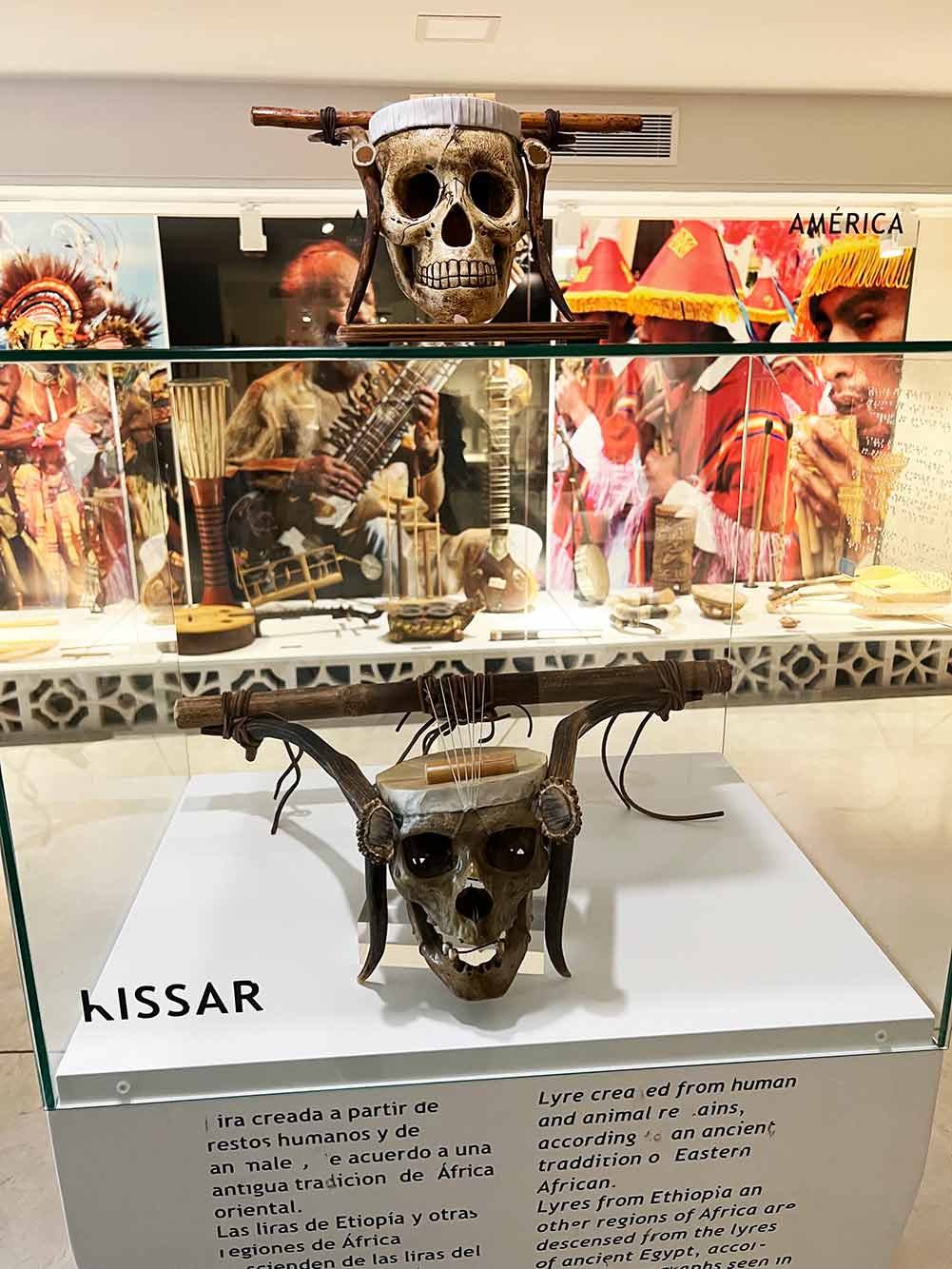
It has quite a presentable collection of musical instruments from all over the world. Some of the pieces were quite exotic. The interactive panels will let you play the sound. You can not touch the instruments, but unlike the caves, photos are welcomed.

The museum is a personal collection of Carlos Blanco Fadol, who gathered all these items for 4 decades across all 5 continents.
The museum features some interactive stations, so you just not only see the instruments but also hear them in action.
Location Details
The Busot Castle Ruins
The ruins of Busot Castle or Castell de Busot in Valencian are right behind the town hall. Constructed during the 12th century under Almohad rule, the castle used to be an example of Moorish military architecture.

Following the Christian Reconquista, the castle underwent modifications in the 13th and 15th centuries to adapt to evolving military needs. In 1252, King Alfonso X of Castile incorporated Busot into the territory of Alicante. Later, in 1298, the area became part of the Kingdom of Valencia under King James II of Aragon.
Location Details
After a few steps uphill, you will be rewarded with a nice view of the Busot valley and the road leading to Cabeçó d’Or. There’s no visitor center or any staff around, but there’s a gate and a lock, so it’s not open 24 hours. Apparently, that is done as a safety measure.
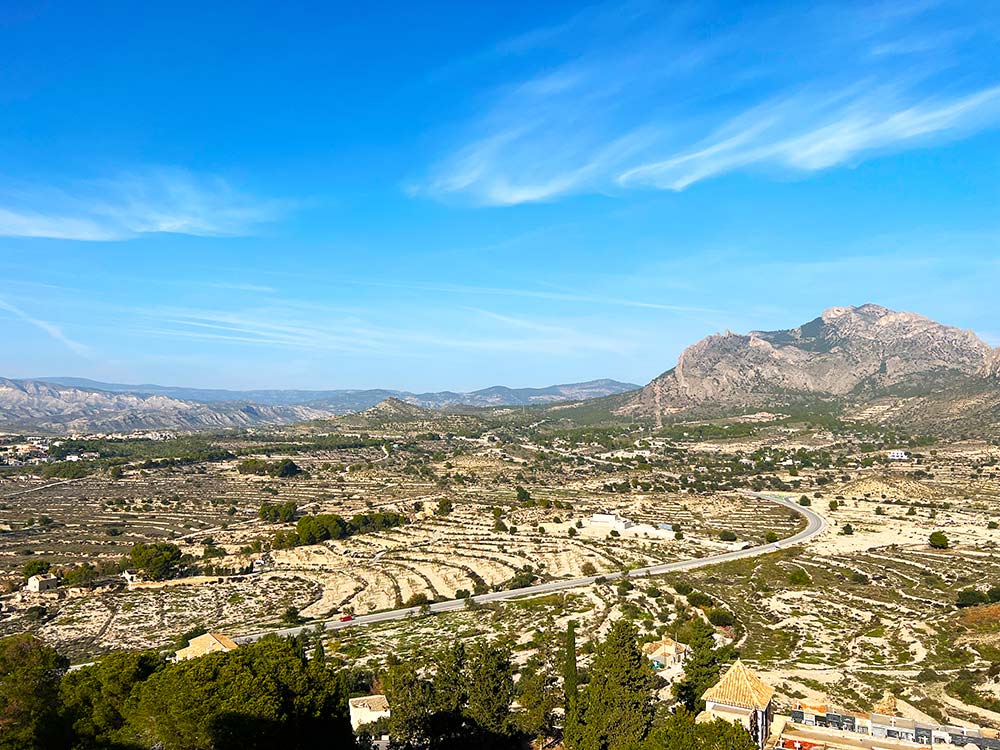
However, the ‘castle’ itself is a bit of a disappointment. Very little is left from the original construction and everything you see are modern-day cement blocks. From below it looked a lot more promising.
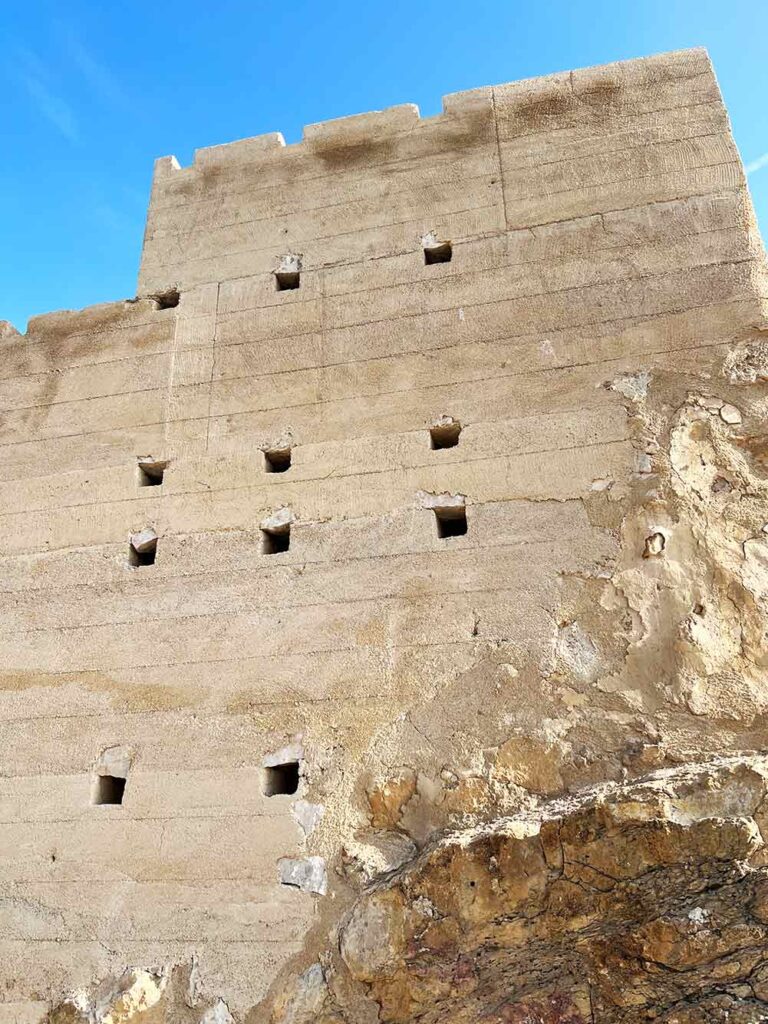
So we can only imagine what it used to look like in its heyday. Probably something like that.

Other Caves near Alicante
Despite the many hills and mountains in the area, there are not too many caves that are adapted for tourist visits. Most of them are small, non-spectacular, and not ‘civilized’.
Cueva de las Calaveras
A notable one is Cueva de las Calaveras or the Cave of Skulls. The site is closer to Valencia than Alicante, so the drive will take about 3 hours on one end. It got its name because of the remnants of former inhabitants found inside. Today it is a full-scale tourist attraction, the same as Canelobre Caves, with parking lots, food stalls, and kids’ playground.
Cave of the Arches (Benitatxell)

Another great place along the shore is the Cave of the Arches. The place is great for snorkeling and taking sunset photos. The cave is free and accessible from both — land and sea. It’s a little bit far from Alicante as well, so it’s better to combine the cave with visiting Benidform or some water activities.

